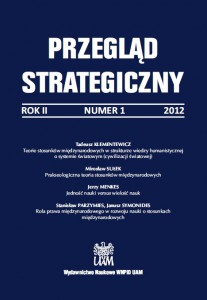CENNIEJSZE NIŻ ŻŁOTO? METALE ZIEM RZADKICH
W ŚWIATOWEJ STRATEGII GOSPODARCZEJ
MORE VALUABLE THAN GOLD? RARE EARTH ELEMENTS IN GLOBAL ECONOMIC STRATEGY
Author(s): Anna KlupaSubject(s): Supranational / Global Economy, Economic policy
Published by: Uniwersytet Adama Mickiewicza
Keywords: gold; global economic strategy
Summary/Abstract: Next to oil and gas there are which have increasing importance for industrial development – rare earth elements. Without them, much of the world’s modern technology would be vastly different and many applications would not be possible. They are key component of in a large assortment of advanced military and civilian technologies and key to the emergence of green technology such as the new generation of wind powered turbines and plug-in hybrid vehicles. There are 17 rare earth elements which moderately are abundant in the earth’s crust, some even more abundant than copper, lead, gold, and platinum. Although they are not concentrated enough to make them easily exploitable economically. 97 percent of the world’s rare earth elements are produced in China. Increasing global demand and Chinese reductions in export quotas over the past six years have led to international concerns about future supply shortages. China’s request for rare earths is also growing, what causes even more problems for importers of these resources. Even those countries which were largely self-sufficient in these critical materials over the past decade have become dependent upon imports from Beijing. In addition, this monopoly over rare earths has led to fears of China using its dominance as leverage to influence other nations’ foreign policies. Considering example of Japan, these anxieties are not groundless. This paper is designed to present te phenomenon of rare earth elements and their importance for international economy. It also explores ways of facing Chinese monopoly by other states.
Journal: Przegląd Strategiczny
- Issue Year: II/2012
- Issue No: 1
- Page Range: 239-251
- Page Count: 13
- Language: Polish

